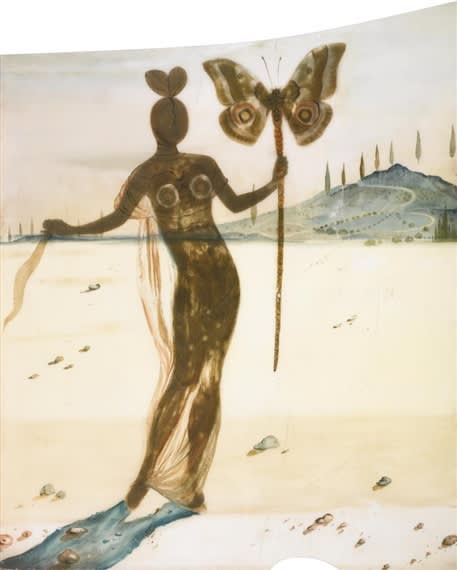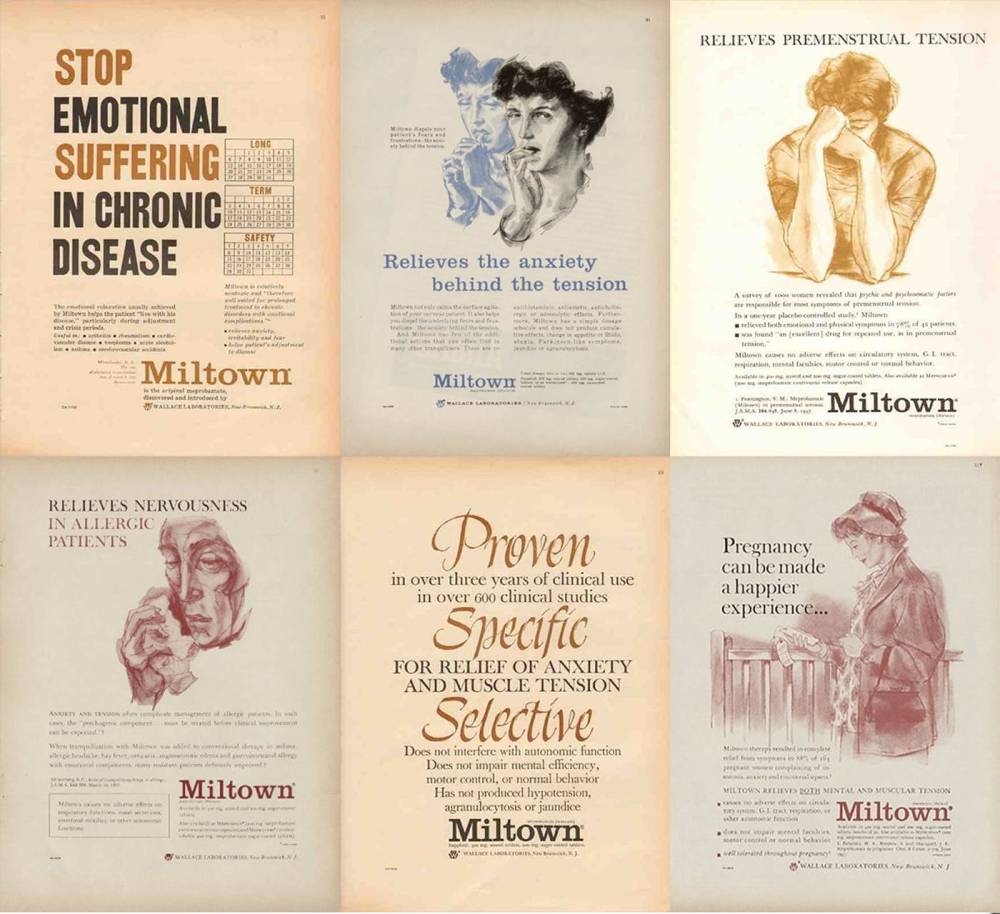
Wallace Laboratories
Various Miltown Ads, 1955
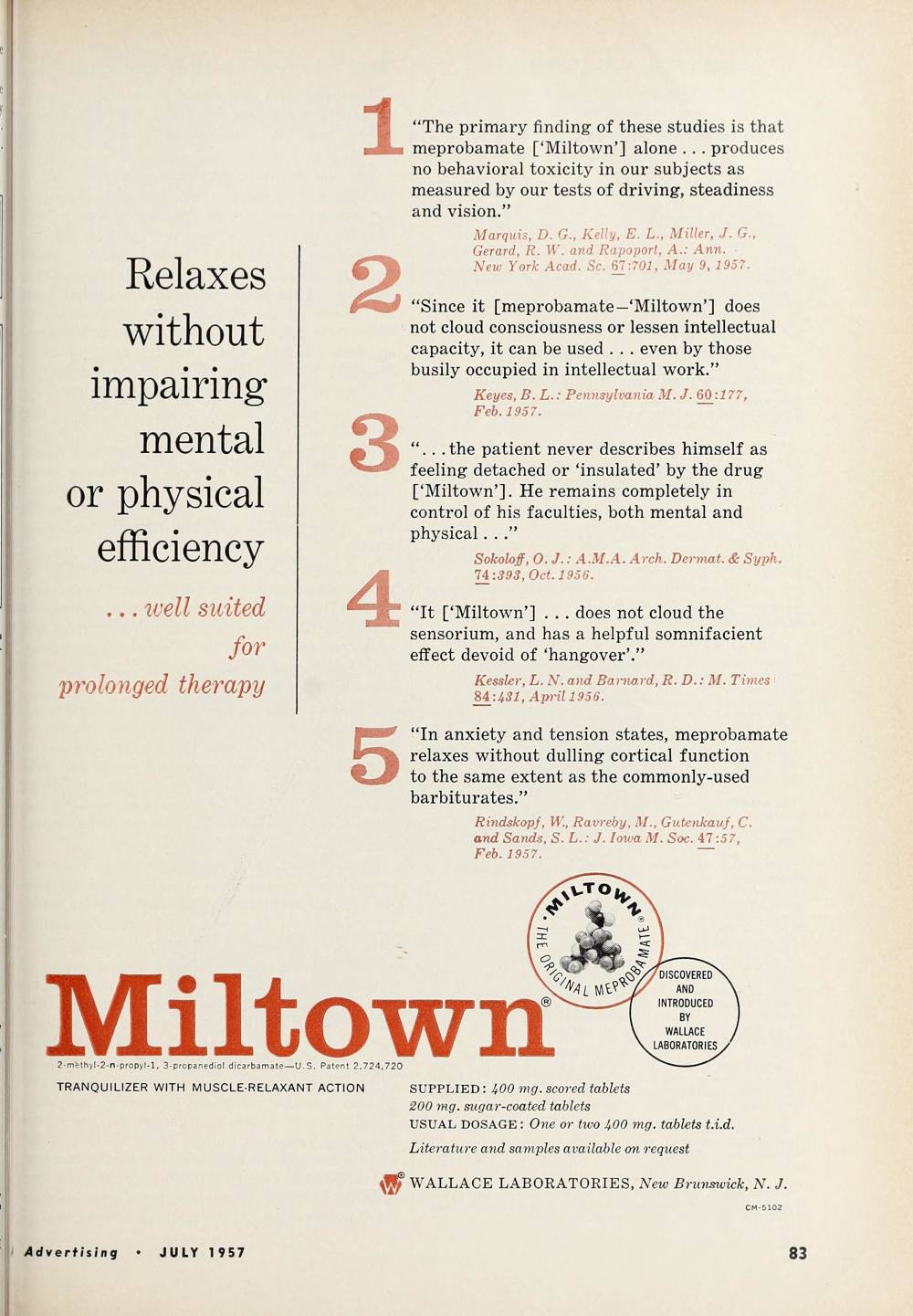
Wallace Laboratories
Miltown Ad, 1957
The drug Meprobamate, invented by Frank Berger in the 1940s and available to the public in 1955, is largely associated with suburban housewives. Marketed as “Miltown” by Wallace Laboratories, these minor tranquilizers were aggressively advertised towards women, claiming to allow them to stay relaxed under the pressures of motherhood and homemaking. One of such women—coined “Miltown Wives”—was Salvador Dalí’s wife Gala. Gala championed the use of Meprobamate for anxiety, and approached Wallace Laboratories with the idea to commission her husband Salvador for a painting.
The result was Crisalida, a little-known commercial work by Salvador Dalí. Featured at the American Medical Association convention in San Francisco, Crisalida was an interactive installation designed to convey the transformation from anxiety to tranquility by way of Miltown. A 60-foot long, wriggling white caterpillar made of parachute silk dominated the convention. An air-blowing system moved the sides in and out, immersing visitors in Dalí’s idea of tranquility. Inside the caterpillar, a series of surreal figures represent anxiety and tranquility. Visitors first meet a man with a staff topped with a black butterfly, holes carving through his anatomy. A female figure carries a staff topped with a moth. A maiden in yellow, with a head made of colorful flowers, represents the “true butterfly of tranquility”. Finally, a maiden skipping rope is intended to leave visitors feeling calm. While Dalí’s idea of tranquility does not necessarily match the image most of us have, the attention Dali brought to Miltown was advantageous to Wallace Laboratories.
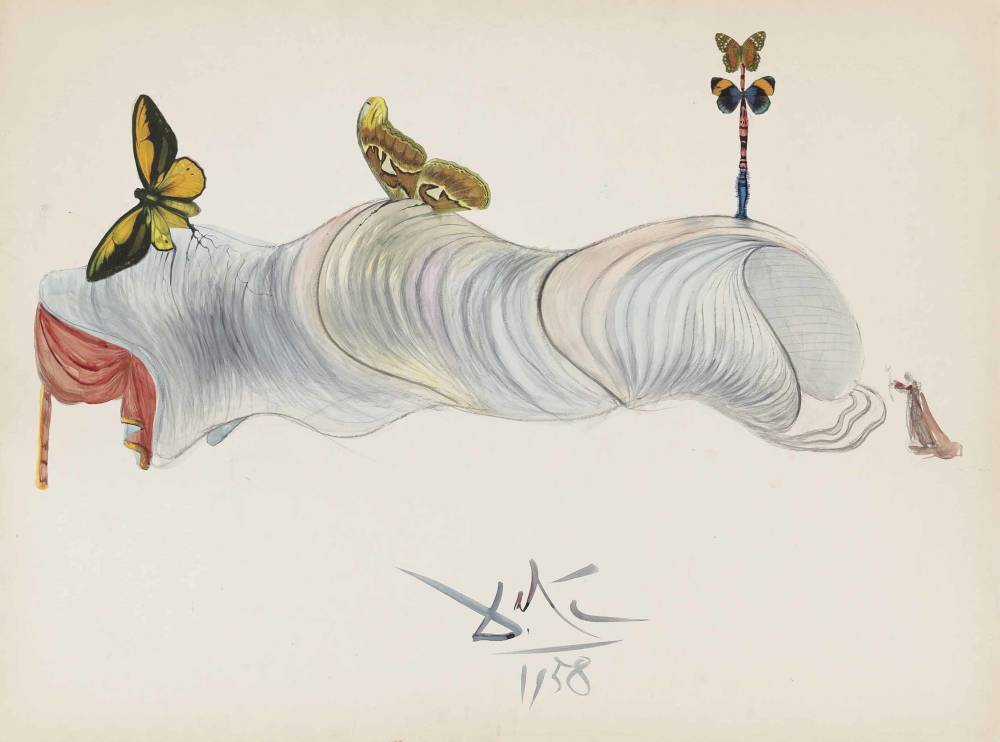
Salvador Dalí,
Plan for 'Crisalida' Installation, 1958

Salvador Dalí
Plan for 'Crisalida' Installation, 1958
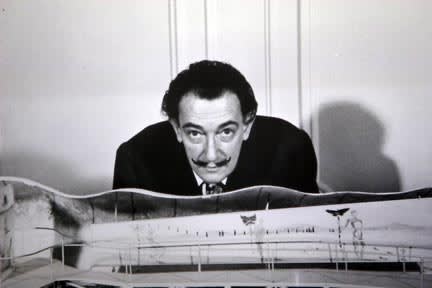
Salvador Dalí
Maquette for 'Crisalida' Installation, 1958
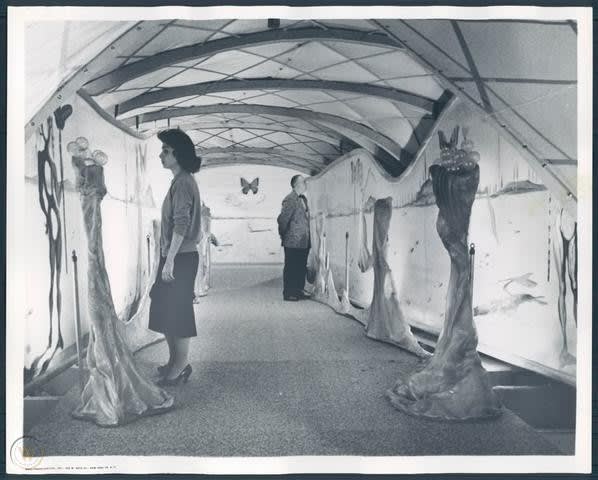
Salvador Dalí
'Crisalida' Installation, 1958
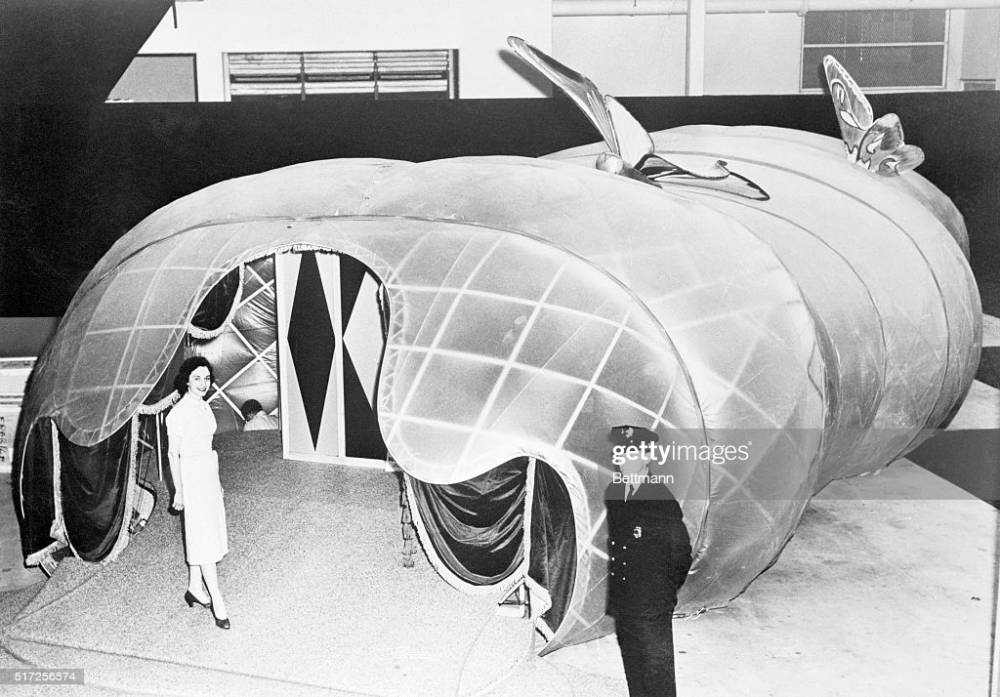
Salvador Dalí
'Crisalida' Installation, 1958
A printed brochure made by Dalí, also commissioned by Wallace Laboratories, was released in 1958, immediately after the completion of Santiago el Grande (1957). The cover illustration features the same caterpillar-like creature from the installation, surrounded by butterflies. Inside, three full-color pages show illustrations of the figures inside the installation, along with a black-and-white photograph of Dali with a model of the exhibition. The prints are extremely rare today, and largely unknown by collectors.
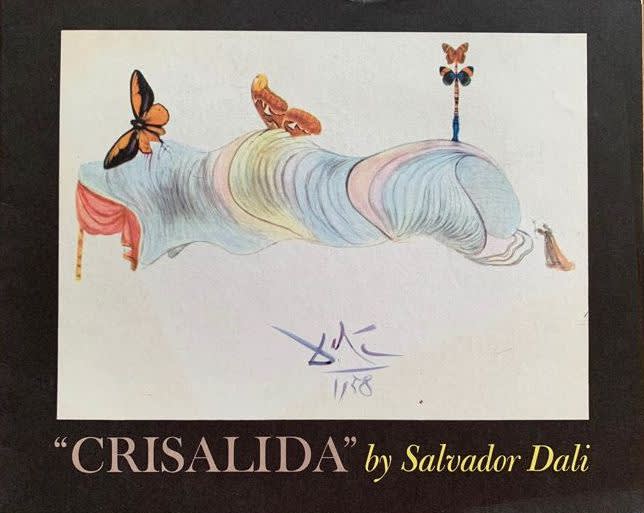
Salvador Dalí
'Crisalida' Brochure, 1958
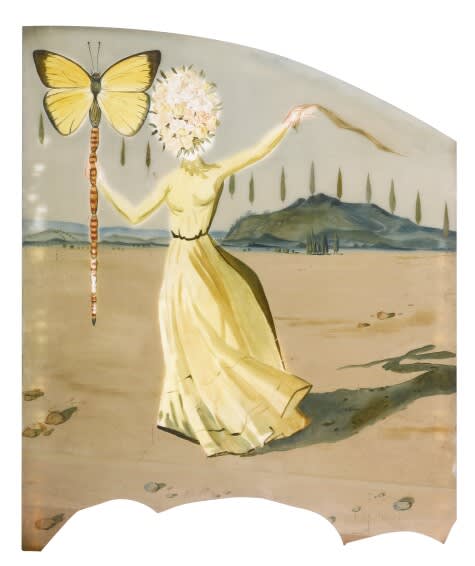
Salvador Dalí
Page from 'Crisalida' Brochure, 1958
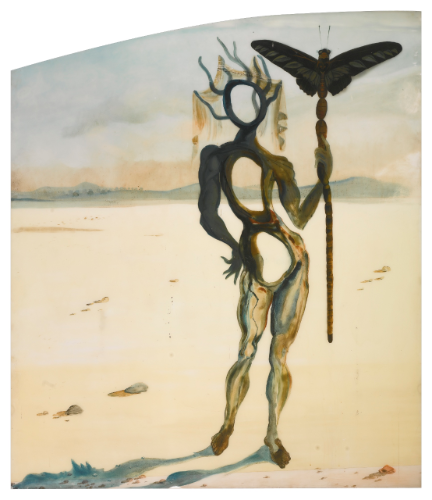
Salvador Dalí
Page from 'Crisalida' Brochure, 1958
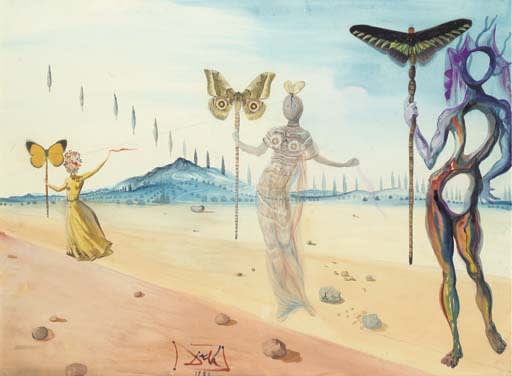
Salvador Dalí
Page from 'Crisalida' Brochure, 1958
Through Crisalida, Dalí created an immersive experience, not unlike a rudimentary version of today’s virtual reality. The Metaverse seeks to make a similar leap into alternative reality, simulating physical spaces in the digital world. The goal for many companies, including Meta (previously Facebook) is to make these spaces so convincingly immersive that visitors think they are experiencing reality. Without the technology we have today, Dali achieved his own immersive experience by stimulating the senses. His dynamic, inventive Crisalida installation was a successful early example of what the Metaverse is trying to do today.
